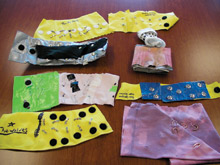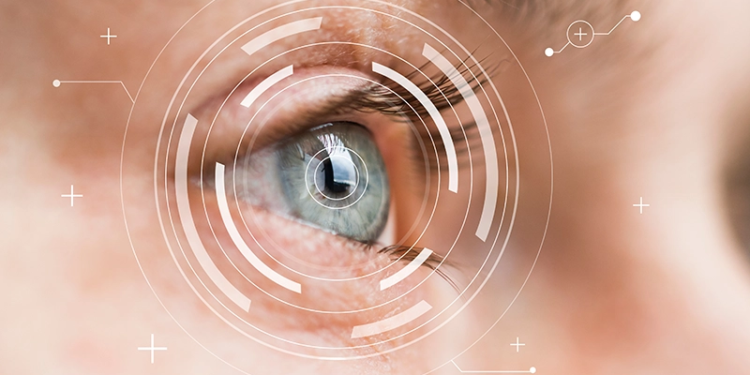With help and guidance from engineers and prosthetists from the Johns Hopkins University Applied Physics Laboratory (JHU APL), Laurel, Maryland, and JHU APL’s Research and Exploratory Development Department (REDD), ten third-, fourth-, and fifth-graders at Parkway Elementary School, Frederick, Maryland, developed a myoelectric armband that enables users to play the video game Guitar Hero without requiring the use of buttons.

Student-built myoelectric arm bands.
Photograph courtesy of JHU APL.
The students are members of Parkway’s MacGyver Club, an after-school science, technology, engineering, and math (STEM) program designed to enhance concept learning and critical thinking by connecting the STEM concepts with activities outside of the traditional classroom.
The myoelectric armband project is based on work done by REDD’s Robert “Bobby” Armiger, a Johns Hopkins University (JHU), Baltimore, Maryland, biomechanical engineer, Carol Reiley, a JHU doctoral student in computer science, and R. Jacob Vogelstein, PhD, a JHU biomedical engineer through an Independent Research and Development grant. The team rewired Nintendo’s Guitar Hero III: Legends of Rock to allow individuals with amputations to train and practice with prosthetic prototypes. The project is an outgrowth of their work on the Revolutionizing Prosthetics 2009 (RP2009) program, led by JHU APL and funded by the Defense Advanced Research Projects Agency (DARPA), to develop a prosthetic arm that performs and appears more like a natural limb. They later wrote up a less expensive process that would allow others to recreate the training interface or the entire project for prosthetic purposes, and shared that process with the Parkway students.
REDD’s Courtney Moran, CP, also involved in the RP2009 program, led the students in developing their own air guitar-the controller in the traditional version of the game-by building parts of the components each week. Subject matter experts visited the club to discuss the basic STEM concepts to consider in the design process, including conductivity, circuitry, basic physiology, muscles, and the nervous system as conductors and insulators, and principles of designing an armband to be used as a body interface, as well as demonstrating the air guitar system and JHU APL’s Modular Prosthetic Limb (MPL).
The students collected and tested electronic materials for strength of conductivity and resistivity, and body interface materials, measuring for arm circumference to ensure that the adjustable armband would support the conductive materials they collected as electromyogram sites and fit on their arms snugly.
“We used a borrowed headstage, a component that helps convert and filter small muscle signals into information that the MPL interprets into the appropriate movement, to simplify the conversion of signals and enable us to have the kids focus on the broader principles of making the armband and the roll of the armband in the overall system,” said Moran.
Each team of three students tested their bands for wrist flexion, wrist extension, and no movement in a virtual integration environment (VIE), using MiniVIE, a software suite created by Armiger and Reiley that enables pattern recognition code writing and control for both prosthetic and robotic control systems. It allows users to program the armbands as well as view and control a virtual MPL, rather than the actual physical device. At the final session when the students tested and integrated the armbands, “every single one worked,” Moran said. “It was incredible.”




